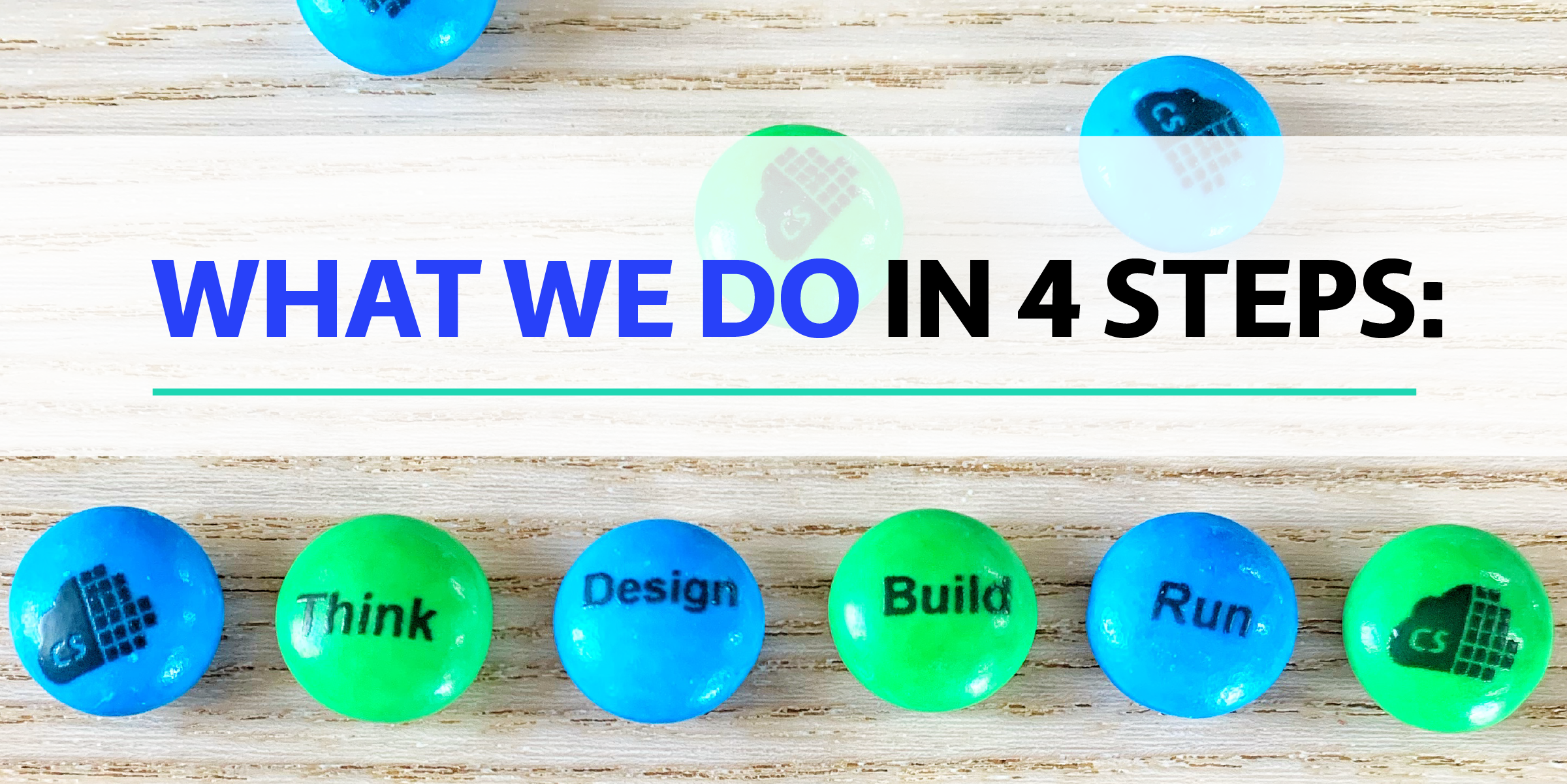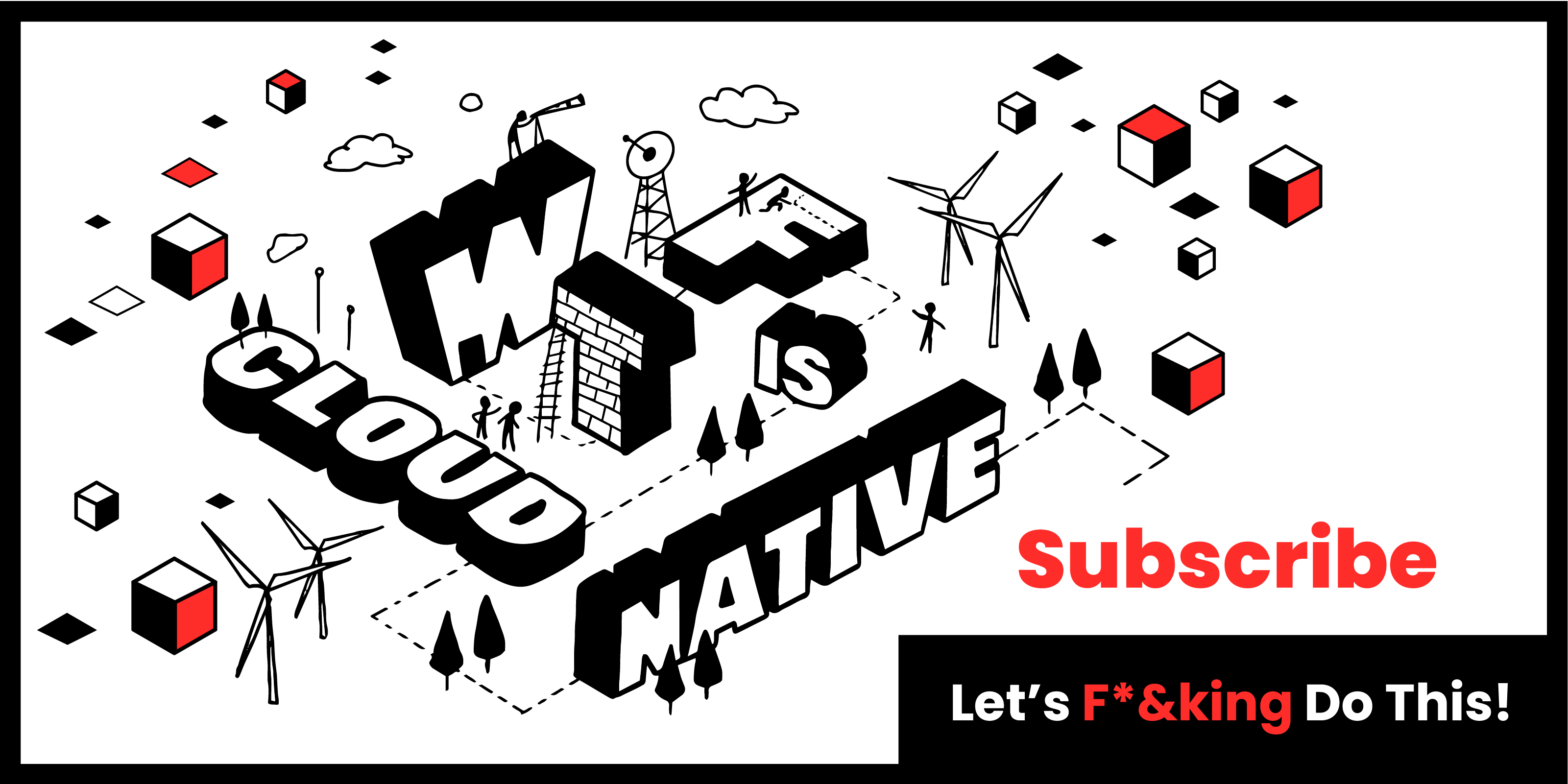Moving your business to the cloud could mean freeing your organisation from the need to maintain your own antiquated, energy-sucking data centres for everything. Escaping the ever-present threat that a problem in one part of your system could cripple the whole thing. Recruiting—and keeping— smart engineers eager to work with the latest technology.
And best of all, positioning your company to take advantage of the new business opportunities a fully Cloud Native system could bring, staying competitive in your market and delighting your customers with fast, responsive service.
Finding the right path means reducing the number of possible futures and with them, your risk of making the wrong moves. It also means getting your whole organisation, top to bottom, moving together on that same path.
At Container Solutions, we’ve figured out a way to do that. We break the Cloud Native transformation process into four phases: Think, Design, Build, and Run.

Our system comes from our founders’ and our engineers’ years of experience in helping organisations move to the cloud. Our co-founders Jamie Dobson and Pini Reznik, along with our colleague Michelle Gienow have distilled our expertise in a book slated to be published this fall by O’Reilly, ‘Cloud Native Transformation: Practical Patterns for Innovation’.
The Problems Our Process Solves
Any time a company undertakes a Cloud Native transformation, the range of possible futures is dizzying. And that’s the problem: Because of the endless range of choices, there are also so many ways to get it wrong.
Companies get into trouble—expensive, time-consuming, opportunity-wasting trouble—all too easily. More than 700 different platforms, products, and vendors vie for your attention. And some Cloud Native technology, such as Kubernetes, can be deceptively easy to get started with, but increasingly complex to manage as that tech interacts with an organisation’s existing operations.
Sometimes, the trouble can even come from within your organisation: leaders who haven’t fully committed to the Cloud Native journey, or even engineers who fear or resist learning new tech, new programming languages, or new ways of working.
Step 1: Think
The Think stage is essential in any Cloud Native transformation, and often overlooked; companies and their engineers often underestimate how cutting-edge technology will change the ways in which they will do business. To help businesses plan for their transformation, Container Solutions starts with our Cloud Native Assessment.
In the Assessment, we interview your engineers and other staff, and observe how you work, to answer two major questions:
- What is the company trying to achieve?
- What is its current situation?
This rapid process, which takes two to four days, helps companies gain situational awareness, and benefit from a gap analysis. We tell you where you stand, and give you a high-level perspective on what you need to do to get where you want to go.
Pausing to think through these business-strategy questions makes success more likely. Otherwise, a company’s leaders are poised to press play on a full-blown Cloud Native migration, without fully understanding the complexities. They likely don’t yet know where they want to go. Steaming ahead without this knowledge can result in a catastrophic waste of money and time.
Step 2: Design
The second phase of Container Solutions’ work with companies, Design, is all about reducing risk even further. The process can take as little as one week, and as many as 12.
The Design phase is all about experimenting: We work directly with a company’s engineers to conduct small-scale trials. Together we eliminate the futures and options that won’t work, to arrive at those that do. Getting to a big success sometimes takes a lot of little failures.
The Design phase speeds things up a lot. It may sound counterintuitive, and even loaded with risk, but entering into a cloud migration without knowing exactly what you will do first is the smartest possible way to start. Trying things out on a small scale before investing sweat, blood, and tears into a major transformation actually reduces risk.
Risk declines because, as we and your organisation’s engineers collaborate on experiments, together we eliminate things that don’t work and expose the ones that do. Next steps come into stark relief. Rapid feedback is essential to this process, and the way it gets amplified in the Design phase will help the organisation in the future, as it scales up and responds to customer needs.
The results of all these little experiments actually shape the architecture of the new system. Companies need the best-fit tools and techniques for their Cloud Native platform, which are not necessarily the ones offered in bundled solutions. To make sure our clients get the most appropriate solutions, we take a vendor-neutral approach to helping organisations find their path. We work for our clients, not vendors.
Steps 3 and 4: Build, Run—and Succeed
After this period ends, we enter the Build phase. The company now knows where it’s going, and our experiments have eliminated the wrong paths. It’s full steam ahead on implementing the new system and onboarding teams to use it intelligently.
Most importantly, they are also ready to take full charge. True Cloud Native success happens when self-sufficient teams Run the new Cloud Native system on their own. However, if an organisation prefers to get partial or full help from us in maintaining its new system once it’s built, we are always prepared to offer that service.
There is no guarantee exactly what you will be doing at the very start of this process. Cloud Native simply doesn’t work that way. But the Think, Design, Build, Run process will first help your company understand where it is right now, where you need to go next—and how to get there. We’re ready when you are.
To help your organisation start thinking about its challenges and opportunities, let us give you our Cloud Native Transformation cards. Click below to learn more!



 Previous article
Previous article
